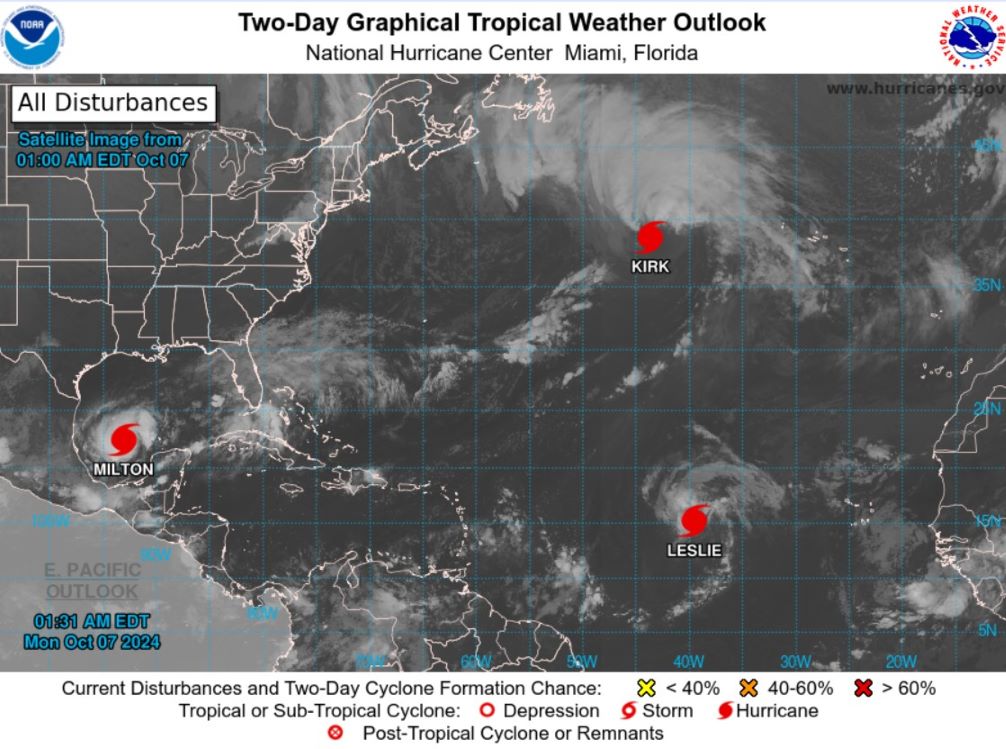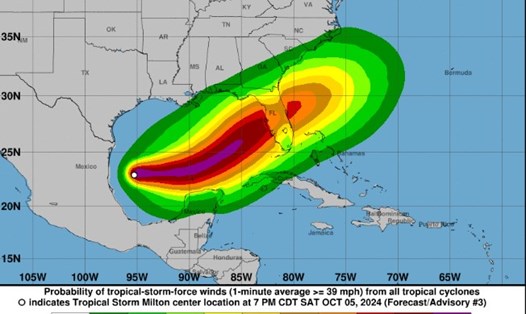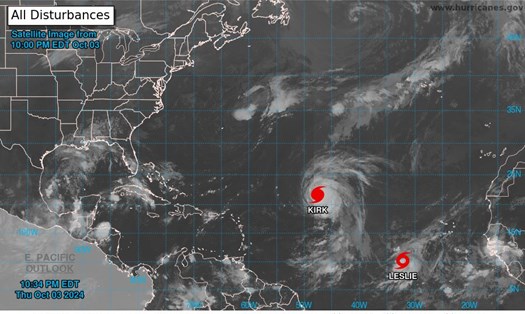According to the latest hurricane forecast from the US National Hurricane Center (NHC), Hurricane Milton, currently active in the southern Gulf of Mexico, is moving east and is expected to become a major hurricane today.
NHC meteorologists warn that the storm could cause significant impacts to Mexico's Yucatan Peninsula and then the west coast of Florida (USA).

According to the latest report from the US National Hurricane Center (NHC), at 1:00 a.m. on October 7 (local time), the storm was located at about 22.2 degrees North latitude, 93 degrees West longitude, about 355 km northwest of Progreso, Mexico.
Current sustained winds are at a maximum of 150 km/h. The storm is currently moving east at 10 km/h, with a central pressure of 975 mb.
The NHC predicts Milton will continue to move east-northeast tonight, then turn more rapidly northeastward Tuesday and Wednesday. The storm is expected to pass over the northern Yucatan Peninsula and the southern Gulf of Mexico today and tomorrow, before making landfall on the west coast of the Florida Peninsula on Wednesday.
The NHC has issued a hurricane warning for the area from Celestun to Cabo Catoche, Mexico. A tropical storm warning is issued from Celestun to Cancun, Mexico.
Additionally, hurricane and tropical storm warnings are likely to be issued for parts of Florida (USA) later today.
Regarding the dangers Milton could bring, the NHC warns that hurricane-force winds could extend up to 35 km from the center of the storm, with tropical storm winds extending up to 130 km.
Heavy rain will also occur in Florida and the Yucatan Peninsula (Mexico).
Additionally, the NHC warned that some areas could be affected by storm surge, with sea levels expected to rise by 2 to 4 feet along the northern coast of the Yucatan Peninsula.
Storm surge is also affecting and will continue to affect the southwestern Gulf Coast and is expected to spread north and east over the next day or two.
Given the complex weather situation, tourists planning to travel to the above localities and neighboring areas should continuously update information about the storm from official sources and local meteorological agencies.
If travelers are planning to travel to affected areas, they should consider changing their itinerary or postponing their trip to ensure the best travel experience.
If you are in a potentially affected area, prepare an emergency kit that includes food, water, medicine and other essential items.
Comply with instructions and evacuation orders from local authorities, limit outdoor activities, especially water activities, when there are severe weather warnings.



